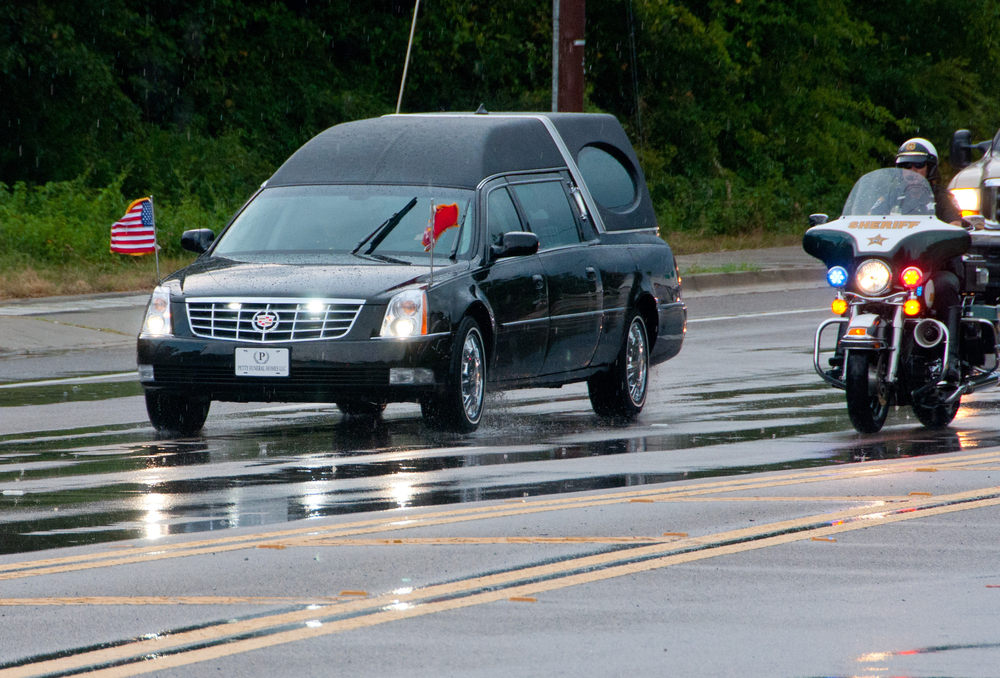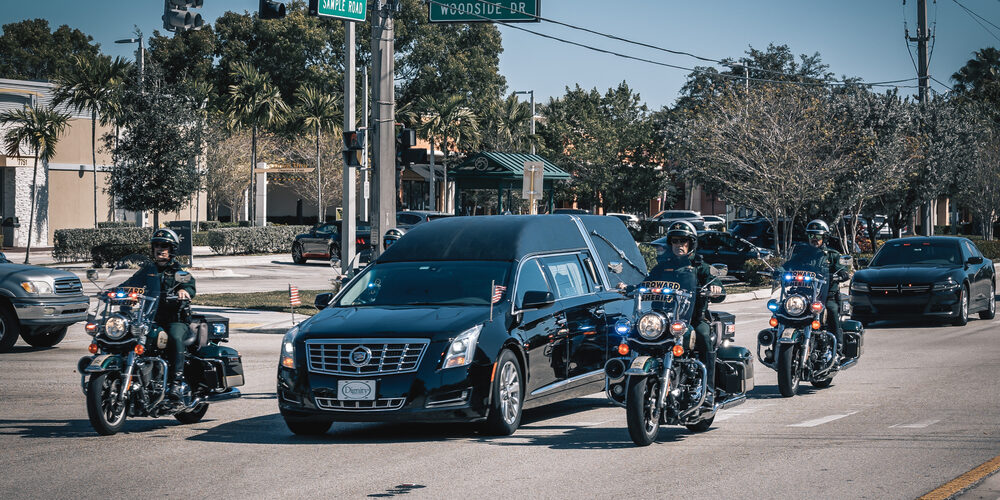The funeral car procession is a long-standing tradition that honors the deceased, allowing family and friends to accompany their loved one to their final resting place. Though the practice dates back centuries, today’s funeral processions—especially in busy states like California—require a balance of understanding, care, and professionalism.
Whether you’re a funeral director organizing the procession, a driver participating in it, or someone sharing the road, knowing proper etiquette and the state’s rules helps ensure safety, dignity, and compassion for everyone involved.
In this post, CoachWest shares everything you need to know about funeral car processions—including California-specific laws, safe driving practices, and how to choose the right funeral cars and hearses to serve your community.

Understanding Funeral Car Processions
A funeral car procession is a coordinated line of vehicles that follows the hearse from the funeral service to the burial site or the final resting place. These processions are typically led by a funeral director or an escort vehicle and may include family members, friends, and service participants.
Today’s funeral vehicles—such as luxury hearses, limousines, and lead cars—are designed for both form and function. They offer a respectful way to honor the deceased while providing reliability and comfort for those traveling together.
In California, processions are common throughout Los Angeles, Orange County, and surrounding areas, where funeral directors often rely on top-of-the-line vehicles to ensure a smooth, dignified procession.
The Order of Vehicles in a Funeral Procession
Driving in a funeral procession is more than just following the car ahead — it’s about helping maintain the unity and dignity of the moment. A smooth, coordinated procession allows families to focus on what matters most while honoring their loved one safely and respectfully.
- Lead vehicle or escort car: Often driven by the funeral director or a traffic officer with hazard lights and flags to signal the procession’s start.
- Hearse or funeral car: A vehicle that carries the deceased.
- Immediate family vehicles: Typically limousines or sedans carrying close relatives.
- Other mourners’ vehicles: Friends and extended family follow behind.
- Flower or support vehicles: Sometimes used for floral arrangements or pallbearers.
California funeral processions typically use hazard lights, flags, or magnetic identifiers to help other motorists recognize the group. These identifiers help maintain unity and ensure that law enforcement and other motorists recognize the procession as a single moving unit.
The California Vehicle Code (CVC §2817) notes that other drivers must yield the right of way to any properly identified funeral procession, and no one should intentionally interrupt or cut through the line.

How to Drive in a Funeral Procession
At some point, nearly every driver will encounter a funeral procession. Taking a few moments to slow down, yield, and show courtesy helps maintain the reverence of the occasion— and keeps everyone safe under California law.
- Turn on hazard lights and headlights before joining the line.
- Keep a safe but close distance between cars to prevent outside vehicles from merging.
- Obey all traffic signals, unless a police escort is present and directing otherwise.
- Follow the lead vehicle closely, staying alert and maintaining a consistent, slow pace.
- Avoid distractions—keep phones down, radio volume low, and eyes on the road.
- Always yield to emergency vehicles, even if it temporarily interrupts the flow of traffic.
Explore Our Funeral Car Inventory

California Funeral Procession Laws
California law doesn’t require a formal permit for a funeral procession, but it does regulate how they are conducted. According to the California Highway Patrol, funeral escorts and directors must take precautions to ensure safety, visibility, and coordination with local traffic patterns.
Under Vehicle Code §2817, it’s illegal for unauthorized drivers to interrupt a funeral procession. Law enforcement officers in California can issue fines or citations to any driver who:
- Cut into or through an active procession
- Fail to yield the right of way
- Disobey the escort or traffic officer’s directions
Frequently Asked Questions
Do funeral cars have the right of way in California?
Yes. Under CVC §2817, vehicles in a properly identified funeral procession have the right of way, provided they are led by a hearse or marked escort car.
Can you get a ticket for interrupting a funeral procession?
Yes. Interrupting, cutting off, or joining a procession without authorization can result in a citation or fine, similar to impeding an emergency vehicle.
How long do funeral processions usually last?
It varies based on distance and traffic, but most processions last between 15 and 45 minutes from the service to the cemetery. Escorts often coordinate with local law enforcement to minimize delays.
Where can I buy funeral vehicles near Los Angeles?
CoachWest’s inventory of funeral cars and hearses for sale features leading brands and models designed for performance and dignity.
Contact CoachWest for Premium Funeral Vehicles
For over 35 years, CoachWest has provided funeral vehicles that meet the highest standards of craftsmanship and performance. From Cadillac to Lincoln, each model is designed for long-lasting dependability, elegant design, and a smooth driving experience worthy of every ceremony.
Whether you’re replacing a single vehicle or expanding your lineup, we can help you find the perfect fit for your business and the families you serve. Visit our website to browse our current inventory or contact us to speak to a friendly member of our team!









